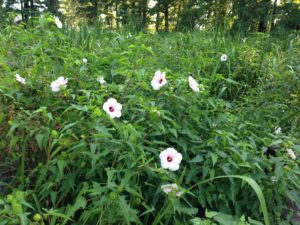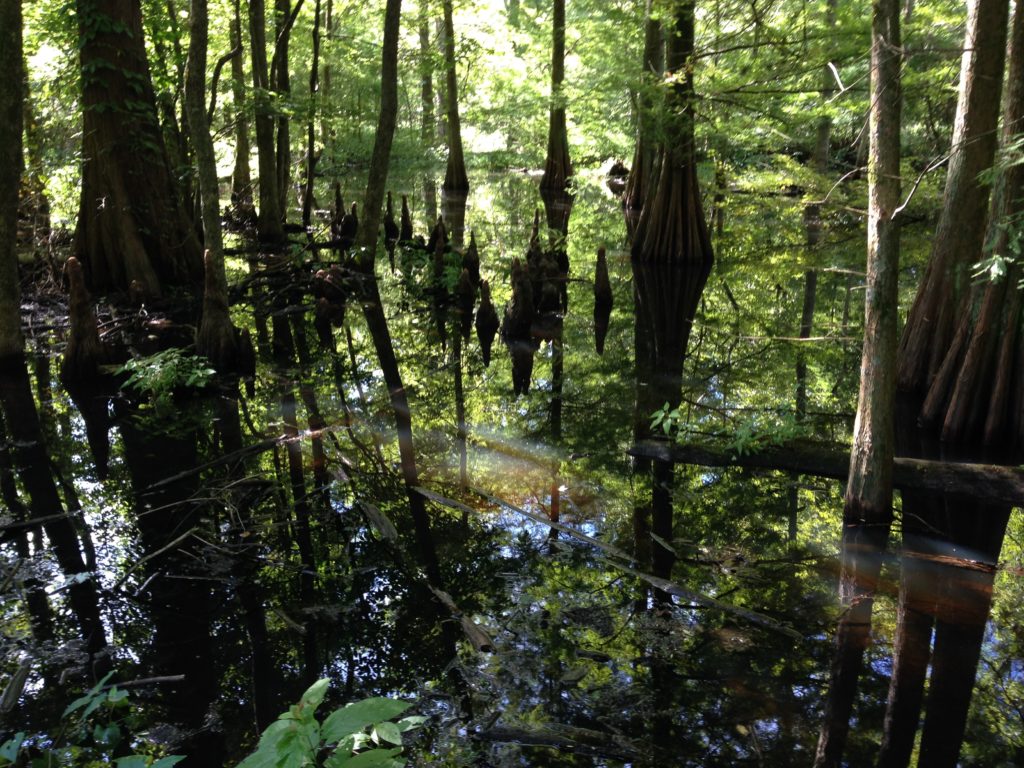The powerful New Madrid earthquakes produced much ugliness 200 years ago. River bluffs collapsed. Wave-shaped furrows covered acres of prairie. Sand boils shot rotted vegetation into the air.
But the quakes also created beauty. They turned a large swampy area in the northwest corner of Tennessee into what today is the eye-pleasing and spirit-soothing15,000-acre Reelfoot Lake. It formed when the ground sank, creating a bowl that retained flood water when the Mississippi ran backward.

Bald cypress on the shore of Reelfoot Lake
This week I detoured on my drive home from Killer Nashville to visit the Reelfoot Lake State Park near Tiptonville. The shallow lake, a major stop on birds’ migratory routes, lies roughly 20 miles southwest of New Madrid as the crow flies, and a great deal farther as a car goes.
It’s well worth a short detour if you do nothing but stop at the visitors center just outside of Tiptonville and walk on the boardwalk at the edge of and alongside the lake. I was so captivated that I took about 50 pictures in this one small area.
First I lingered over wetlands with dense vegetation, including flowers. Seeming almost tropical, this surely resembles the swamp (drained long ago) New Madrid residents fled through when the earthquakes hit in late 1811 and early 1812.

Dense growth in the wetlands by Reelfoot Lake
On the lake’s shore, bald cypress trees grow out of the water. Sun filters through them to light cypress knees and small turtles lazing. Such sights refresh the soul.
Guided boat tours of the lake leave from the boardwalk, and rangers answer questions in the visitors center. There a small but satisfying museum features local history (the quakes, settlement, night riders), Native American artifacts (pottery and arrowheads), live animals (fish, snakes, birds), and such local specialties as a stump jumper (a canoe suited to passing through and over submerged trees and cypress knees).
One display appears at first glance to be a modern abstract painting. It actually shows, in coded colors, the curvy routes that the Mississippi followed through the area over the centuries before the lake’s formation. You can buy a copy in the gift shop.
I drove the 20 miles or so around the lake, taking a side road into the National Wildlife Refuge. There the swamp looks formidable. At the end of the narrow road, waterlilies bloom in the lake.

The swamp in the National Wildlife Refuge at Reelfoot Lake
Even disasters sometimes create beauty.
To find out more about the park, visit http://www.tnstateparks.com.
—Carolyn Mulford
